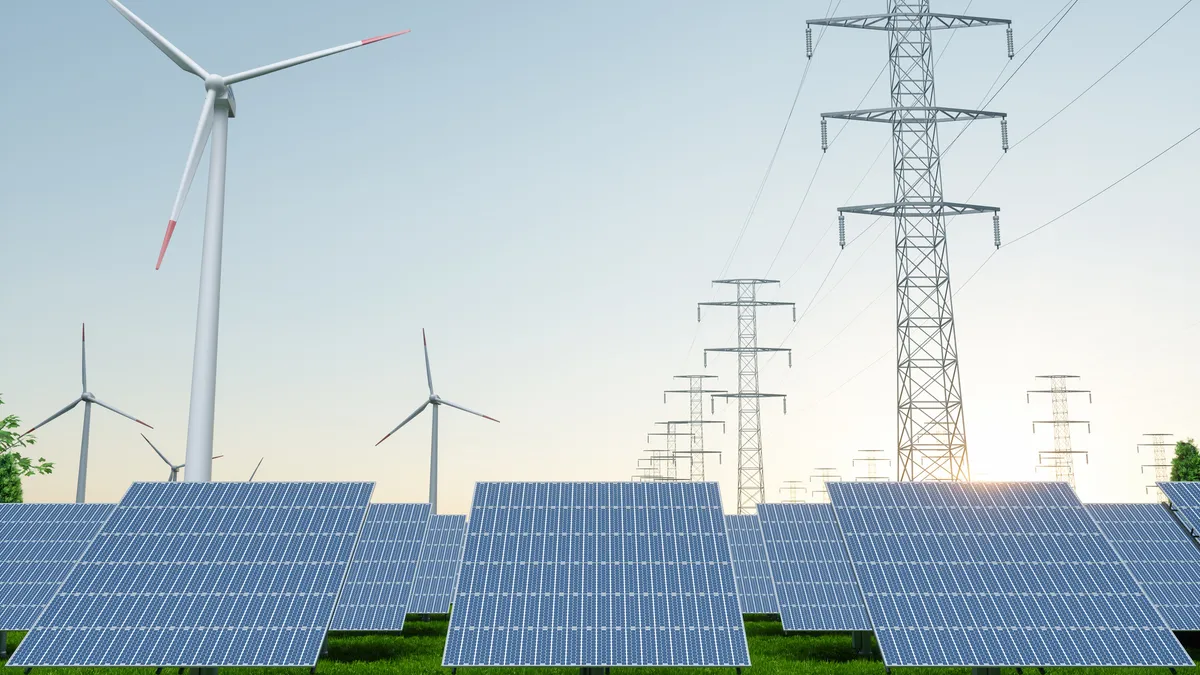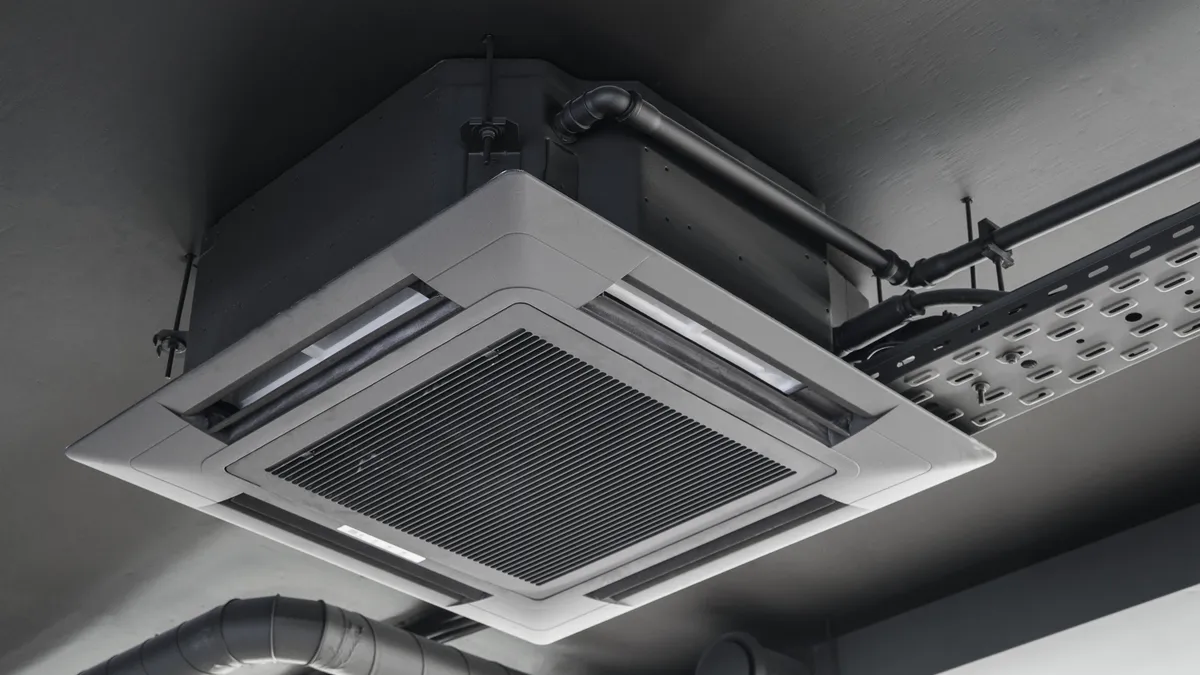In 2022, a data center in Houston came to Gridmatic with an ambitious ask: they wanted to begin matching their energy consumption with zero-emission power sources on an hourly basis, in a fashion similar to the 24/7 clean energy goal announced in 2020 by Google.
Over the course of the next year, the energy modeling company did just that. They used artificial intelligence to forecast the data center's energy needs and the availability of clean energy to identify ideal sources of energy and avoid the over-buying that is typically associated with time-matching energy strategies. By the end of the year-long pilot project, the data center was successfully matching 80% of its power consumption with zero-carbon energy sources on an hourly basis, said David Miller, vice president of business development for Gridmatic.
The pilot was even more successful than anyone the team had hoped: the initial goal was to match about 60% of the data center's hourly energy needs with clean energy resources, Miller said. But they did not ultimately find affordable resources to match all of the data center's energy needs.
Google — the pioneer of the 24/7 clean energy goal — has had a similar experience. As of its most recent environmental report, the tech giant was matching 64% of the energy consumed by its data centers and offices with carbon-free energy on an hourly basis.
Critics of the IRS's currently proposed guidance for the 45V hydrogen production tax credit, which would require hydrogen producers that want to use the credit to match their energy use with clean electricity production on an hourly basis, often argue the rule's expectations are impossible. And at least right now, Miller and other experts say, it probably is. A handful of exceptionally determined large energy buyers might be able to make it work, but it's not currently possible at scale.
Even so, they say, it should be possible in the future — potentially in the very near future. Miller, Google and others agree that the industry simply needs to overcome two not-insignificant hurdles: the lack of sufficiently granular emissions data, and the fact that sufficient round-the-clock clean energy that buyers want doesn't exist.
Generation gaps
There are a few energy buyers in the U.S. who currently get 100%, 24/7 clean energy. Constellation Energy has two customers — one utility, and one data center — who receive 24/7 clean energy products from the company, according to Mason Emnett, senior vice president of public policy for Constellation. They're also talking with other companies looking for similar options — including customers looking for energy products to supply clean energy at times not covered by their existing PPAs, and new customers looking for fully comprehensive 24/7 energy options, Emnett said.
But Emnett does not believe it would be possible, right now, for just any energy customer to buy 24/7 clean energy. Constellation is able to offer these products specifically because they are located within the PJM Interconnection, which has a registry that offers hourly emissions data, and because Constellation itself owns a large fleet of nuclear and hydropower assets that can provide clean power when wind or solar energy is not available.
“For the size of customer that we typically serve, we have the ability to provide hourly matched products for any of them,” Emnett said. But realistically, he said, “we wouldn't be able to do that for the entire grid.”
If hourly matching is to be a thing for broader swaths of the U.S. power grid, Miller believes there will need to be more localized, dispatchable carbon-free generation such as nuclear generation. There will be at least some increased flexibility in energy demand in the future, Miller said — EVs and electrolyzers for hydrogen production could shift power consumption to times when wind and solar energy are abundant. But neither he nor Emnett believe load flexibility will be sufficient to make 100% 24/7 clean energy possible for a majority of energy customers.
“If we are not making the effort now to look forward in time and ensure that the resources we have operating are meeting customer demand, we are not setting ourselves up for success in that future decarbonized world,” Emnett said.
Emnett argues that this is a reason to support enshrining 24/7 matching in regulatory policy. Right now, wind and solar energy is in demand because they appear to be the most economical options for carbon-free energy, and nuclear power is less popular because of the comparatively high cost, Emnett said. But if you need to buy power when the sun doesn't shine and the wind doesn't blow, that changes the calculus — the cost of overbuilding wind and solar and energy storage assets exceeds that of nuclear power, Emnett said.
“That is why we talk about hourly matching, because right now the market signals don't indicate where that firm carbon-free energy is needed,” Emnett said. “Hourly matching goes a long way to identifying the time periods in which we need more carbon-free energy to be operating. That will realign the value of firm carbon-free assets like nuclear, but it will also demonstrate the development needs that we have as a society, and as a country.”
But building more clean, dispatchable generation won't be enough to make hourly emissions matching more accessible, Emnett said. Getting there in the future will also require more transparent and standardized emissions data.
Collecting the data
Each of Constellation's existing 24/7 energy contracts required extensive one-on-one negotiations to ensure the power supplied to the customer was truly carbon-free, Emnett said. That means the process at present is not particularly scalable.
The trouble here is there simply aren't a great number of options for buying and trading renewable energy credits on an hourly level, Miller said. A handful of emerging and growing marketplaces do exist — but even on those platforms, it can be difficult to find credits outside the PJM territory that record hourly emissions data.
PJM Environmental Information Services, a registry serving the PJM Interconnection, began trading certificates with hourly time stamps last March, in response to customer inquires — especially inquiries related to nuclear and hydropower assets within the region, according to company officials. The company also believes hourly matching will change the game for these generation resources — and has expressed hope that being the first RTO to offer hourly emissions data might attract new customers.
LevelTen Energy, which runs a marketplace for power purchase agreements and other renewable energy assets, has also begun work on a marketplace for trading time- and location-specific renewable energy certificates, which they call granular certificates, as has startup company WattCarbon.
WattCarbon started out with the goal of creating an accounting system for energy buyers who worry that renewable energy credits may not result in real-world emissions impacts, CEO McGee Young said. In time they realized the best solution was assigning a serial number for every watt hour of energy generated, with attached attributes like location and carbon emissions.
On the WattCarbon marketplace, which is expected to offer energy products from approximately a million generation resources sometime this summer, data comes directly from the generators themselves. This means buyers could access hourly data for generation outside the PJM area through the WattCarbon marketplace, regardless of whether other RTOs follow PJM’s lead. WattCarbon also buys and reissues energy attribute certificates from the PJM area to avoid double-counting, Young said.
Getting the data directly from the generators also means the WattCarbon marketplace plays well with distributed energy resources and virtual power plants looking to aggregate these resources for sale into larger energy marketplaces. The ability to sell attributes like avoided emissions could help virtual power plants and distributed energy resources become more economical compared to their utility-scale counterparts, by creating additional revenue for these generators.
But there is a catch associated with this generator-direct model. It's limited to sellers who sign up for the market. And right now, Young said, the marketplace does not have enough suitable sellers to offer any of their customers 24/7 clean energy 100% of the time.
“Matching is not the hard part,” Young said. “It's going out and procuring ... in terms of supply, we don't have the overnight supply that we'll want. Probably that is going to come from other types of distributed energy resources that a lot of the country doesn't have, so they will have to look elsewhere.”





















